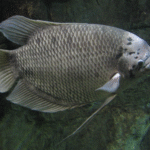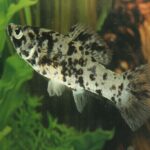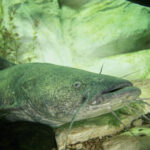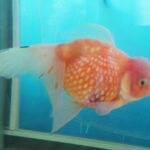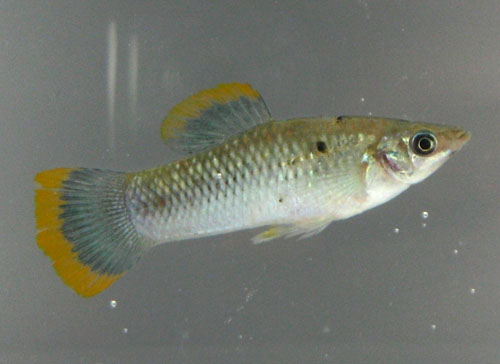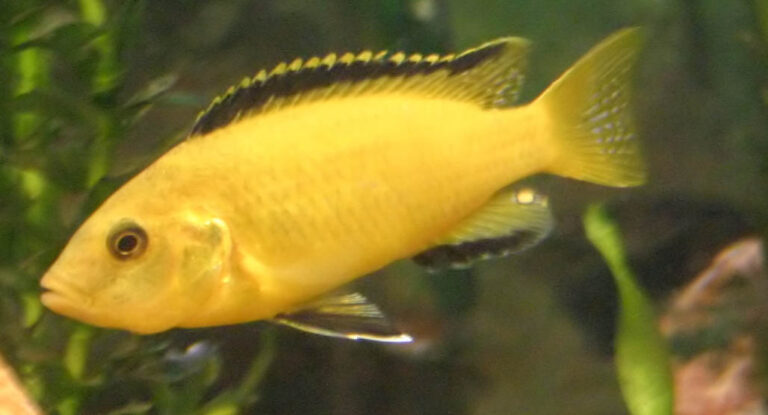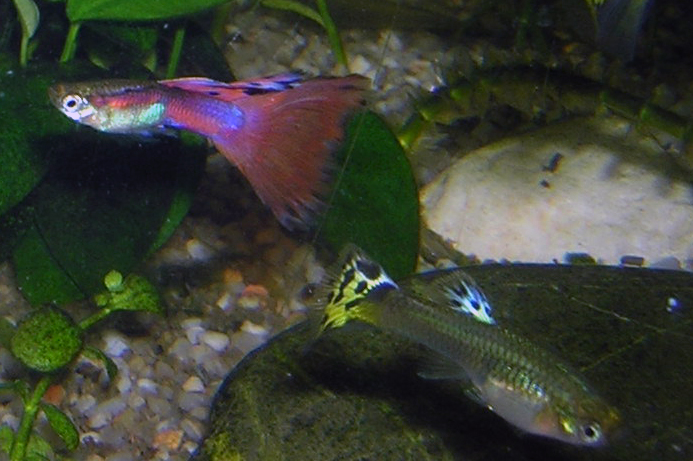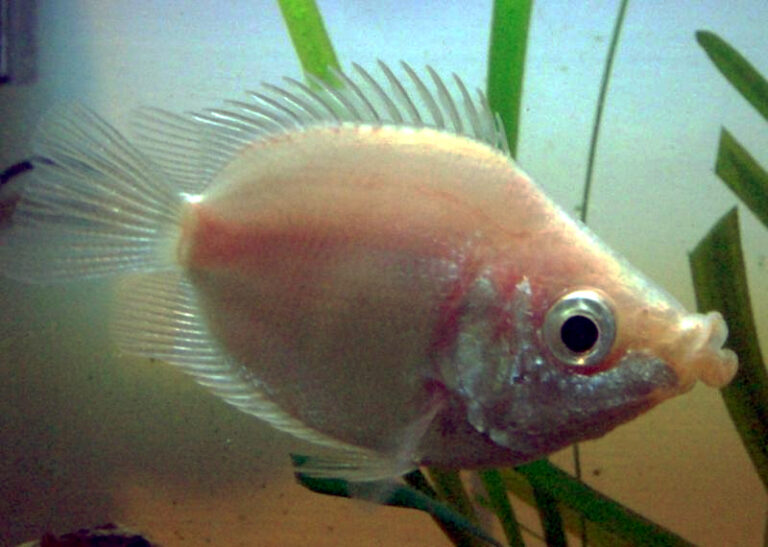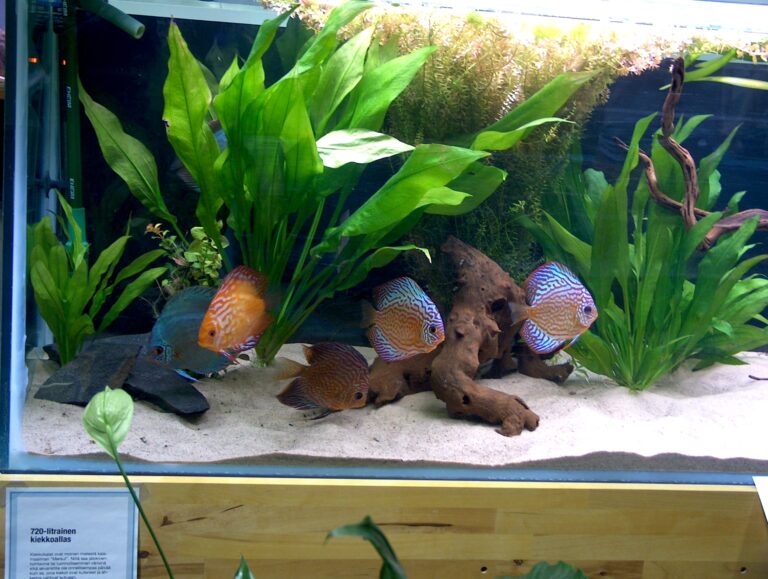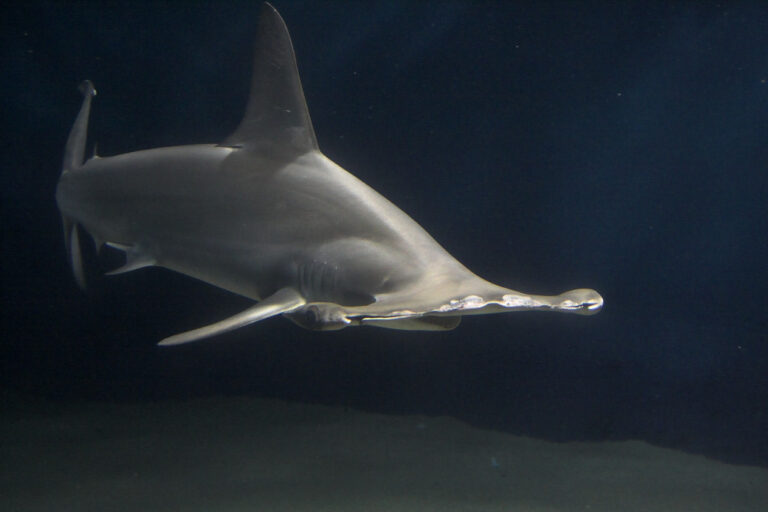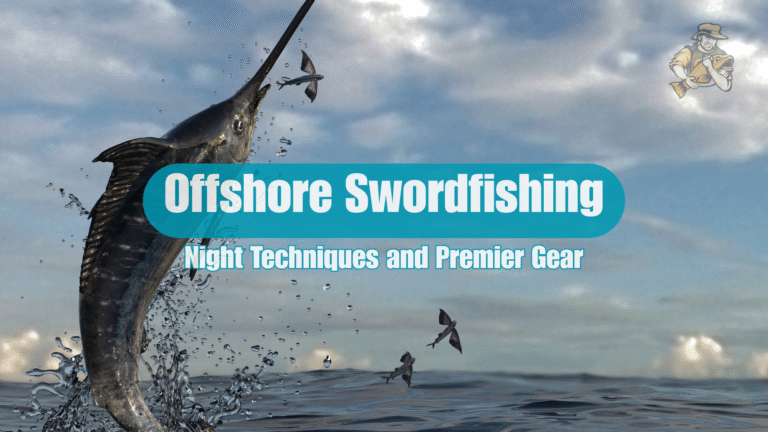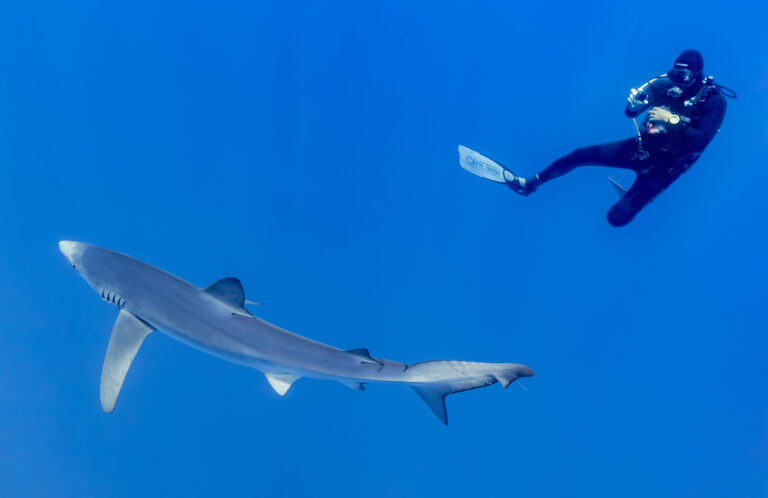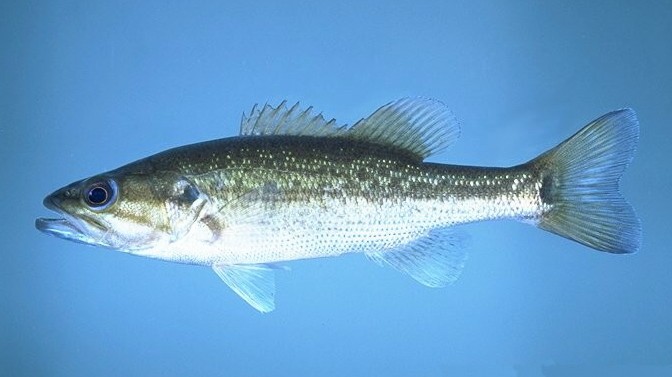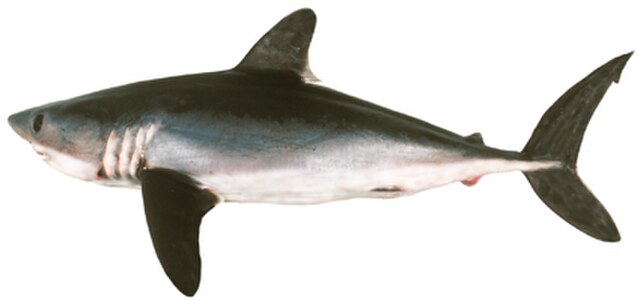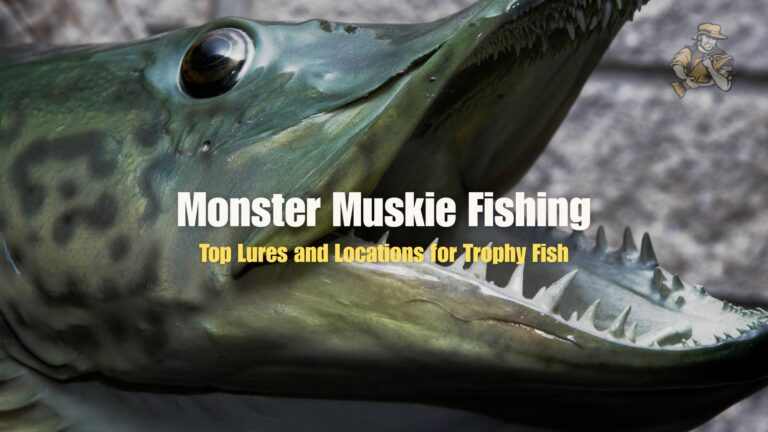Killifish
By Ryan Maron | Last Modified: June 7, 2025
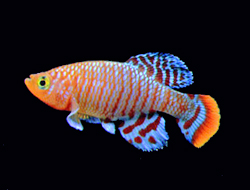
Killifish represent one of the most diverse and ecologically significant groups of small freshwater and brackish water fish, comprising over 1,270 species within the order Cyprinodontiformes. These remarkable fish, scientifically classified under various families including Fundulidae, Aplocheilidae, and Nothobranchiidae, have evolved extraordinary adaptations that allow them to thrive in some of the planet’s most challenging aquatic environments. From temporary pools in African savannas to salt marshes along North American coastlines, killifish demonstrate unparalleled resilience and biological innovation.
The ecological importance of killifish extends far beyond their modest size, typically ranging from 2.5 to 10 centimeters in length. These fish serve as crucial intermediary species in aquatic food webs, controlling mosquito populations through their voracious consumption of larvae while simultaneously providing essential forage for larger predatory fish, birds, and amphibians. Their role as biological pest controllers has earned them recognition from public health organizations worldwide, making them invaluable allies in natural mosquito management programs.
| Feature | Details |
| Common Name | Killifish |
| Scientific Name | Multiple genera (Fundulus, Aphyosemion, Nothobranchius) |
| Family | Fundulidae, Aplocheilidae, Nothobranchiidae |
| Typical Size | 2.5-10 cm (1-4 inches), 0.5-15 grams |
| Habitat | Freshwater, brackish, temporary pools |
| Diet | Mosquito larvae, small invertebrates, zooplankton |
| Distribution | Global, all continents except Antarctica |
| Conservation Status | Varies by species, many threatened |
Taxonomy & Classification
The taxonomic classification of killifish reveals a complex evolutionary history that spans multiple families within the order Cyprinodontiformes. This order, commonly known as topminnows and pupfish, encompasses approximately 1,270 described species distributed across ten families. The three primary families containing killifish species are Fundulidae (North American topminnows), Aplocheilidae (Old World killifish), and Nothobranchiidae (African lampeyes and annual killifish).
Within the family Fundulidae, the genus Fundulus represents the largest group of North American killifish, containing over 40 species including the well-studied mummichog (Fundulus heteroclitus) and the Gulf killifish (Fundulus grandis). These species demonstrate remarkable adaptability to varying salinity levels, making them excellent subjects for physiological and ecological research. The family Aplocheilidae includes popular aquarium species such as the golden wonder killifish (Aplocheilus lineatus) and various Aphyosemion species known for their spectacular coloration.
The family Nothobranchiidae contains some of the most extraordinary killifish species, particularly the annual killifish of the genus Nothobranchius. These African species have evolved unique life cycles that allow them to survive in temporary water bodies that completely dry up seasonally. Recent phylogenetic studies using molecular techniques have revealed that the traditional morphology-based classifications require significant revision, with several species previously considered closely related showing distant evolutionary relationships.
Genetic analysis has also uncovered cryptic species complexes within established killifish groups, suggesting that actual species diversity may exceed current estimates by 20-30%. The ongoing taxonomic revisions continue to reshape our understanding of killifish evolution and biogeography, particularly regarding the timing and patterns of their global dispersal.
Physical Description
Killifish exhibit remarkable morphological diversity despite their generally small size, with most species measuring between 2.5 and 10 centimeters in total length. Their body shape typically reflects their ecological niche, ranging from the elongated, pike-like profile of predatory species to the deep, laterally compressed bodies of species adapted for maneuvering through dense vegetation. The dorsal profile usually shows a flattened head region and an upturned mouth positioned for surface feeding, though bottom-dwelling species may exhibit more terminal or subterminal mouth positioning.
Sexual dimorphism represents one of the most striking aspects of killifish morphology, particularly among species within the families Aplocheilidae and Nothobranchiidae. Males typically display vibrant coloration patterns featuring combinations of blues, reds, yellows, and metallic sheens that intensify during breeding periods. Female killifish generally exhibit more subdued coloration with earth tones and cryptic patterns that provide camouflage during egg-laying activities. The intensity of sexual dimorphism varies significantly across species, with some showing subtle differences while others display almost entirely different color schemes between sexes.
The fin structure of killifish provides important taxonomic and ecological information. Most species possess a single dorsal fin positioned posteriorly on the body, though its size and shape vary considerably. Annual killifish species often develop elaborate fin extensions in males, including elongated dorsal, anal, and caudal fin rays that create spectacular displays during courtship. The caudal fin typically shows a rounded or truncate shape, though some species exhibit slight emargination or extension of the upper and lower lobes.
Scale patterns and body proportions offer additional distinguishing characteristics among killifish species. Most possess cycloid scales arranged in regular patterns, with scale counts serving as important diagnostic features for species identification. Body depth ratios, head length proportions, and eye diameter measurements provide quantitative characteristics used in taxonomic keys and species descriptions.
Habitat & Distribution
Killifish demonstrate one of the broadest habitat tolerances among small freshwater fish, occupying diverse aquatic environments across six continents. Their global distribution extends from arctic-influenced waters of northern Canada to tropical regions throughout Africa, Asia, and the Americas. This widespread occurrence reflects their exceptional physiological adaptability and evolutionary success in colonizing varied ecological niches.
North American killifish species inhabit environments ranging from pristine mountain streams to heavily polluted urban waterways. The mummichog (Fundulus heteroclitus) exemplifies this adaptability, thriving in salt marshes, estuaries, and coastal ponds where salinity levels fluctuate dramatically with tidal cycles. These environments often experience temperature ranges from near-freezing in winter to over 35°C in summer, demonstrating the remarkable physiological tolerance that characterizes many killifish species.
African killifish occupy some of the planet’s most challenging freshwater habitats, including temporary pools that exist for only a few months during rainy seasons. Species within the genus Nothobranchius have adapted to survive in small depressions that may hold water for as little as 8-12 weeks annually. These habitats experience extreme temperature fluctuations, dissolved oxygen depletion, and complete desiccation, conditions that would prove lethal to most other fish species.
Tropical Asian killifish species inhabit diverse environments including rice paddies, forest streams, and coastal mangrove systems. The variable salinity tolerance exhibited by many species allows them to occupy brackish water habitats where freshwater and marine influences create complex chemical gradients. Some species demonstrate remarkable site fidelity, returning to specific breeding locations despite seasonal habitat changes.
The microhabitat preferences of killifish often reflect their feeding strategies and predator avoidance behaviors. Surface-oriented species typically inhabit shallow areas with emergent vegetation, while bottom-dwelling forms prefer deeper zones with soft substrates suitable for foraging. Water chemistry requirements vary significantly among species, with some thriving in acidic conditions (pH 4.5-5.5) while others prefer alkaline environments (pH 8.0-9.0).
Diet & Feeding Behavior
Killifish feeding ecology demonstrates remarkable diversity, with species exhibiting specialized adaptations for exploiting different food resources within their aquatic environments. The majority of killifish function as opportunistic micropredators, consuming small invertebrates, insect larvae, and zooplankton. Their upturned mouths and surface-oriented behavior make them particularly effective at capturing prey items at the water-air interface, including mosquito larvae, midges, and emerging aquatic insects.
Mosquito larvae represent a primary food source for many killifish species, particularly those inhabiting temporary pools and shallow wetlands where mosquito breeding activity is intense. A single adult killifish can consume 100-300 mosquito larvae per day, making them incredibly valuable for biological pest control. This feeding behavior has led to their intentional introduction in many regions for mosquito management, though such introductions require careful consideration of potential ecological impacts.
The feeding strategies of killifish vary significantly between species and life stages. Juvenile killifish typically consume smaller prey items including rotifers, copepod nauplii, and small cladocerans, gradually transitioning to larger prey as they mature. Adult feeding patterns often show temporal variation, with peak activity occurring during dawn and dusk periods when prey availability is highest and predation risk is reduced.
Some killifish species exhibit specialized feeding adaptations that distinguish them from their generalist relatives. Certain African species have evolved pharyngeal modifications for processing specific food types, while others demonstrate seasonal dietary shifts that correspond with prey availability cycles. Plant material occasionally supplements the diet of some species, particularly during periods when animal prey becomes scarce.
Foraging behavior in killifish involves both active hunting and ambush strategies. Surface feeders often patrol shallow areas, creating characteristic feeding ripples as they capture prey at the water surface. Bottom-foraging species employ different tactics, sifting through sediments and examining submerged objects for hidden invertebrates. The efficiency of these feeding strategies directly influences growth rates, reproductive success, and survival in challenging environments.
Behavior & Adaptations
Killifish exhibit complex behavioral repertoires that reflect their adaptation to diverse and often unpredictable environments. Social behavior varies dramatically among species, ranging from highly territorial solitary forms to species that form loose aggregations during feeding or breeding activities. Territorial behavior is particularly pronounced in males during reproductive periods, with individuals establishing and defending specific areas through aggressive displays and direct confrontation.
Temperature tolerance represents one of the most remarkable physiological adaptations observed in killifish. Many species demonstrate exceptional eurythermy, surviving temperature ranges that exceed 30°C from minimum to maximum extremes. This thermal tolerance involves sophisticated cellular adaptations including modified membrane compositions, altered enzyme kinetics, and enhanced protein stability mechanisms. Some northern species can survive partial freezing, while tropical forms tolerate temperatures approaching 40°C.
Salinity adaptation constitutes another extraordinary aspect of killifish physiology, particularly among estuarine and coastal species. These fish possess highly efficient osmoregulatory systems that allow rapid adjustment to changing salinity conditions. The kidneys, gills, and specialized salt-secreting cells work in coordination to maintain internal ionic balance across salinity ranges from freshwater to near-seawater concentrations.
Oxygen tolerance in killifish reflects their frequent occupation of environments with variable dissolved oxygen levels. Many species can survive in water with oxygen concentrations as low as 1-2 mg/L, levels that would cause mortality in most other fish species. This hypoxia tolerance involves enhanced oxygen extraction efficiency, modified hemoglobin characteristics, and behavioral adaptations such as surface breathing and movement to more oxygenated areas.
Anti-predator behaviors in killifish include sophisticated escape responses, schooling tendencies in some species, and temporal activity patterns that minimize predation risk. Many species exhibit cryptic behavior during daylight hours, becoming more active during twilight periods when visual predators are less effective. The ability to remain motionless for extended periods while maintaining vigilance represents an important survival strategy in predator-rich environments.
Reproduction & Life Cycle
Killifish reproductive strategies encompass some of the most diverse and extreme adaptations found among freshwater fish species. The most remarkable reproductive adaptation occurs in annual killifish species, which complete their entire life cycle within a single wet season, producing drought-resistant eggs that survive months or years of complete desiccation. These eggs possess specialized protective membranes and enter developmental diapause states that allow survival through multiple dry seasons if necessary.
The reproductive cycle of annual killifish demonstrates extraordinary temporal compression, with individuals reaching sexual maturity within 4-8 weeks of hatching and maintaining high reproductive output throughout their brief adult lives. Males establish territories and court females through elaborate displays involving intense coloration, fin extensions, and ritualized swimming patterns. Spawning typically occurs in soft substrate or vegetation, with females depositing eggs individually or in small clusters.
Non-annual killifish species exhibit more conventional reproductive patterns, though still showing considerable variation in breeding strategies. Some species spawn continuously throughout favorable seasons, while others demonstrate distinct breeding periods triggered by environmental cues such as temperature, photoperiod, or rainfall patterns. Parental care ranges from complete absence to sophisticated egg-guarding behaviors, depending on species and environmental conditions.
Egg development in killifish reflects their diverse reproductive strategies and environmental adaptations. Annual species produce eggs with exceptionally durable chorions and the ability to survive complete dehydration, while non-annual forms typically have more conventional egg structures requiring continuous aquatic conditions. Incubation periods vary from less than two weeks in warm tropical conditions to several months for species in temperate environments.
Juvenile development and growth rates in killifish are closely tied to environmental conditions and food availability. Fast-growing species in productive environments may reach adult size within 6-10 weeks, while others require several months or even years to mature. The remarkable plasticity in growth rates allows killifish populations to optimize reproductive timing relative to environmental conditions and predation pressures.
Predators & Threats
Killifish face predation pressure from a diverse array of aquatic and terrestrial predators throughout their life cycle, with predation risk varying significantly based on habitat, size, and behavior patterns. Aquatic predators include larger fish species such as bass, pike, and cichlids that readily consume adult killifish, while juvenile stages face additional threats from aquatic insects, amphibian larvae, and smaller predatory fish. The surface-feeding behavior characteristic of many killifish species exposes them to aerial predators including herons, egrets, kingfishers, and other piscivorous birds.
Invertebrate predators pose significant threats, particularly to eggs and larval stages. Dragonfly nymphs, water beetles, and aquatic hemipterans actively hunt small killifish, while parasitic organisms can cause substantial mortality in dense populations. The temporary pool habitats favored by some species concentrate both killifish and their predators, creating intense predation pressure that influences behavior, life history, and population dynamics.
Habitat degradation represents an increasingly significant threat to killifish populations worldwide. Urban development, agricultural expansion, and industrial activities have eliminated or severely modified many of the small, shallow wetlands that serve as critical killifish habitats. Pollution from agricultural runoff, urban stormwater, and industrial discharge creates chemical conditions that exceed the tolerance limits of even the most adaptable species.
Climate change poses emerging threats to killifish populations through altered precipitation patterns, temperature extremes, and habitat availability. Annual killifish species are particularly vulnerable to changes in seasonal rainfall patterns that affect the timing and duration of temporary pool formation. Extended droughts can eliminate entire populations, while excessive flooding may dilute the small, concentrated habitats these species require for successful reproduction.
Invasive species introductions have created novel predation and competition pressures for native killifish populations. Non-native fish species often establish populations in killifish habitats, competing for food resources and breeding sites while potentially introducing diseases and parasites. Some killifish species have themselves become invasive in regions where they were introduced for mosquito control, demonstrating the complex ecological impacts of species translocations.
Conservation Status
The conservation status of killifish species varies dramatically across their global distribution, with some species maintaining stable populations while others face imminent extinction. According to the International Union for Conservation of Nature (IUCN), approximately 15% of assessed killifish species are currently threatened with extinction, though this percentage likely underestimates actual conservation risk due to limited data availability for many species.
Several killifish species have already been declared extinct, including the Tecopa pupfish (Cyprinodon nevadensis calidae) and the Parras pupfish (Cyprinodon latifasciatus), both victims of habitat destruction and water diversion projects. These extinctions highlight the vulnerability of endemic species adapted to specific, localized habitats that can be eliminated through relatively small-scale environmental changes.
The Devils Hole pupfish (Cyprinodon diabolis) represents one of the most critically endangered killifish species, with the entire population restricted to a single limestone cavern pool in Nevada. This species has received intensive conservation attention, including captive breeding programs and habitat protection measures, yet population numbers continue to fluctuate at critically low levels, often below 100 individuals.
Many African annual killifish species face severe conservation challenges due to their dependence on temporary pool habitats that are increasingly threatened by development and climate change. Species such as Nothobranchius microlepis and several Fundulopanchax species have extremely limited distributions that make them vulnerable to local habitat changes. The specialized nature of their reproductive cycles complicates conservation efforts, as protection requires maintaining not just water bodies but specific seasonal flooding patterns.
Conservation efforts for killifish species involve multiple approaches including habitat protection, captive breeding programs, and species reintroduction projects. The American Killifish Association and similar organizations worldwide maintain genetic stock centers that preserve endangered species in aquarium collections. These ex-situ conservation programs have proven crucial for several species that have experienced population crashes or temporary habitat loss.
Research initiatives focused on killifish conservation include population monitoring programs, habitat restoration projects, and studies of climate change impacts on temporary wetland systems. Understanding the specific ecological requirements of endangered species remains essential for developing effective conservation strategies that address both immediate threats and long-term environmental changes.
Human Interaction
Human interactions with killifish encompass a diverse range of activities from biological control applications to scientific research and aquarium keeping. The most significant human use of killifish involves their role in mosquito control programs, where species such as Gambusia affinis (mosquitofish) have been introduced worldwide to reduce mosquito populations in standing water bodies. While these programs have achieved varying degrees of success in mosquito reduction, they have also created ecological concerns regarding impacts on native fish communities and aquatic ecosystems.
The aquarium trade represents another major avenue of human interaction with killifish, particularly involving the colorful annual species from Africa and South America. Popular species include members of the genera Aphyosemion, Fundulopanchax, and Nothobranchius, which are prized for their spectacular coloration and interesting reproductive behaviors. The specialized requirements of annual killifish have created a dedicated community of enthusiasts who maintain breeding programs and exchange genetic material to preserve species diversity.
Scientific research applications of killifish extend across multiple disciplines including ecology, evolution, toxicology, and developmental biology. The mummichog (Fundulus heteroclitus) has become a model organism for studies of environmental stress tolerance, serving as a sentinel species for monitoring pollution effects in estuarine environments. Their ability to survive extreme environmental conditions makes them valuable for understanding physiological adaptation mechanisms and climate change responses.
Educational applications of killifish include their use in classroom settings to demonstrate principles of ecology, evolution, and environmental science. The short generation times and observable reproductive behaviors of some species make them excellent subjects for student research projects and laboratory exercises. Their role in ecosystem function provides concrete examples of predator-prey relationships and biological pest control mechanisms.
The cultural significance of killifish varies across regions but often includes their recognition as indicators of ecosystem health and water quality. In some traditional societies, the presence or absence of specific killifish species serves as an informal measure of environmental conditions and seasonal patterns. This traditional ecological knowledge contributes valuable information for conservation and management efforts.
Fishing activities targeting killifish are generally limited due to their small size, though some species are occasionally captured as bait fish for larger game species. The techniques used for collecting killifish range from simple dip nets to specialized traps designed for capturing fish in shallow water environments, similar to methods described in fundamental fishing approaches.
Interesting Facts
The extraordinary adaptations of killifish include some of the most remarkable survival capabilities found in the vertebrate world. Annual killifish eggs can survive complete desiccation for over five years, remaining viable in dried mud while waiting for suitable conditions to resume development. This adaptation surpasses the drought tolerance of many plant seeds and represents one of the most extreme examples of cryptobiosis in animals.
Some killifish species demonstrate exceptional longevity despite their small size, with certain annual species living up to 18 months in captivity when provided with stable conditions. This lifespan extension contrasts dramatically with their typical 6-8 month lifespan in natural temporary pools, illustrating the impact of environmental stress on mortality rates.
The temperature tolerance of certain killifish species includes the ability to survive in water temperatures approaching 45°C in desert springs and temporary pools. These extreme thermal conditions would cause protein denaturation and cellular damage in most other fish species, yet killifish maintain normal metabolic function through specialized physiological adaptations.
Killifish possess remarkable navigational abilities that allow them to return to specific breeding sites across complex landscape patterns. Some species demonstrate site fidelity comparable to salmon, returning to the exact pools where they hatched despite traveling considerable distances during their lifetimes. This navigation ability likely involves multiple sensory cues including chemical gradients, magnetic fields, and visual landmarks.
The jumping ability of many killifish species enables them to escape from drying pools and move between isolated water bodies during drought conditions. Some species can leap distances exceeding ten times their body length, using this ability to access new habitats and escape from predators or deteriorating environmental conditions.
Certain killifish species exhibit color-changing abilities that rival those of chameleons, rapidly altering their pigmentation patterns in response to environmental conditions, social situations, and emotional states. This chromatophore control allows sophisticated communication during courtship and territorial disputes while providing camouflage benefits for predator avoidance.
The metabolic flexibility of killifish includes the ability to survive extended periods with minimal food intake, slowing their metabolic rates to conserve energy during resource-scarce conditions. This adaptation proves particularly valuable in temporary pool environments where food availability fluctuates dramatically throughout the hydroperiod.
Frequently Asked Questions
What makes annual killifish different from other fish species?
Annual killifish possess unique adaptations that allow them to complete their entire life cycle within a single wet season, producing drought-resistant eggs that can survive complete habitat desiccation for months or years. Unlike typical fish eggs that require continuous aquatic conditions, annual killifish eggs enter developmental diapause states and possess specialized protective membranes that enable survival through extreme environmental conditions including complete dehydration, temperature fluctuations, and oxygen depletion.
Can killifish survive in saltwater environments?
Many killifish species demonstrate remarkable salinity tolerance, with some capable of surviving in environments ranging from freshwater to near-seawater concentrations. Estuarine species such as the mummichog (Fundulus heteroclitus) possess sophisticated osmoregulatory systems that allow rapid adjustment to changing salinity conditions. However, salinity tolerance varies significantly among species, with some strictly freshwater forms showing limited ability to survive even moderate salt concentrations.
How effective are killifish for mosquito control?
Killifish can be highly effective mosquito control agents, with individual fish capable of consuming 100-300 mosquito larvae per day. Their surface-feeding behavior and preference for shallow water habitats make them particularly suited for targeting mosquito breeding sites. However, the effectiveness of killifish-based mosquito control depends on multiple factors including species selection, habitat suitability, predator presence, and environmental conditions. Careful consideration of ecological impacts is essential before introducing killifish for mosquito management purposes.
What aquarium conditions do killifish require?
Aquarium requirements for killifish vary significantly among species, though most prefer shallow tanks with gentle filtration and stable water parameters. Annual species typically require soft, slightly acidic water (pH 6.0-7.0) with temperatures between 22-26°C, while temperate species may prefer cooler conditions. Adequate surface area is more important than tank depth for most species, and live or frozen foods generally provide better nutrition than commercial flakes. Many species benefit from spawning substrates such as peat moss or fine-leaved plants, particularly for those attempting to breed annual forms.
Conclusion
Killifish represent one of nature’s most remarkable examples of evolutionary adaptation and ecological resilience, demonstrating extraordinary survival capabilities that allow them to thrive in environments where most other fish species cannot survive. Their role as ecosystem engineers through mosquito control, combined with their value as indicators of environmental health, establishes their importance far beyond their modest size. As climate change and habitat destruction continue to threaten aquatic ecosystems worldwide, understanding and protecting killifish diversity becomes increasingly critical for maintaining the ecological services they provide and preserving the remarkable evolutionary innovations they represent.
Share The Article:
More Fish Species:
-
Gold Dust Molly
The Gold Dust Molly (*Poecilia sphenops*) represents one of the most popular and visually striking freshwater aquarium fish available…
-
Silky Shark
The Silky Shark represents one of the most widespread and ecologically significant requiem sharks in tropical and subtropical waters…
-
Yellow Lab Cichlid
The Yellow Lab Cichlid (*Labidochromis caeruleus*) stands as one of Africa’s most recognizable freshwater fish species, distinguished by its…
-
Guppy
The Guppy (Poecilia reticulata) stands as one of the most recognizable and extensively studied freshwater fish species in the…
-
Kissing Gourami
The Kissing Gourami (*Helostoma temminckii*) stands as one of the most distinctive and recognizable freshwater fish species in both…
-
Discus Fish
The Discus Fish (Symphysodon spp.) stands as one of the most revered species in the freshwater aquarium trade, earning…
Discover
-
Why Your Red Drum Strategy Is All Wrong (Fix It Today)
Last October, I was fishing the eastern shore of Lake Michigan near Ludington with my buddy Mike. Cold front…
-
Hammerhead Shark
The Hammerhead Shark represents one of the most distinctive and fascinating apex predators in marine ecosystems worldwide. These remarkable…
-
Spinner Shark
The Spinner Shark (Carcharhinus brevipinna) stands as one of the ocean’s most distinctive and acrobatic predators, earning its name…
-
Best Fishing Line for Bass in 2025: What Actually Works
I still remember the day I lost that monster largemouth on Lake St. Clair back in 2019. The fish…
-
Offshore Swordfish fishing: Night Techniques and Premier Gear
The first time I ventured into the darkness 30 miles offshore of Key West for swordfish, I was woefully…
-
Blue Shark
The Blue Shark (Prionace glauca) represents one of the ocean’s most accomplished travelers, traversing entire ocean basins in epic…
Discover
-
Spotted Bass
The Spotted Bass (Micropterus punctulatus) stands as one of North America’s most distinctive freshwater game fish, renowned for its…
-
Great Lakes Fishing Tactics That Nobody Talks About (But Should)
Ever notice how some anglers consistently haul in impressive catches from the Great Lakes while others struggle to get…
-
Porbeagle Shark
The Porbeagle Shark (*Lamna nasus*) stands as one of the most fascinating and ecologically significant predators in the North…
-
Winter Fishing Tips: 7 Cold-Weather Tactics Successful Anglers Use
Most anglers pack away their gear when the temperature drops, but the dedicated few know something the others don’t:…
-
7 Best Family-Friendly Fishing Destinations in the U.S. (Tested with Kids!)
I still remember the first time I took my son Tommy fishing. He was five, armed with a Spider-Man…
-
Monster Muskie Fishing: Top Lures and Locations for Trophy Fish
There’s nothing – and I mean absolutely nothing – that compares to the heart-stopping moment when a monster muskie…



